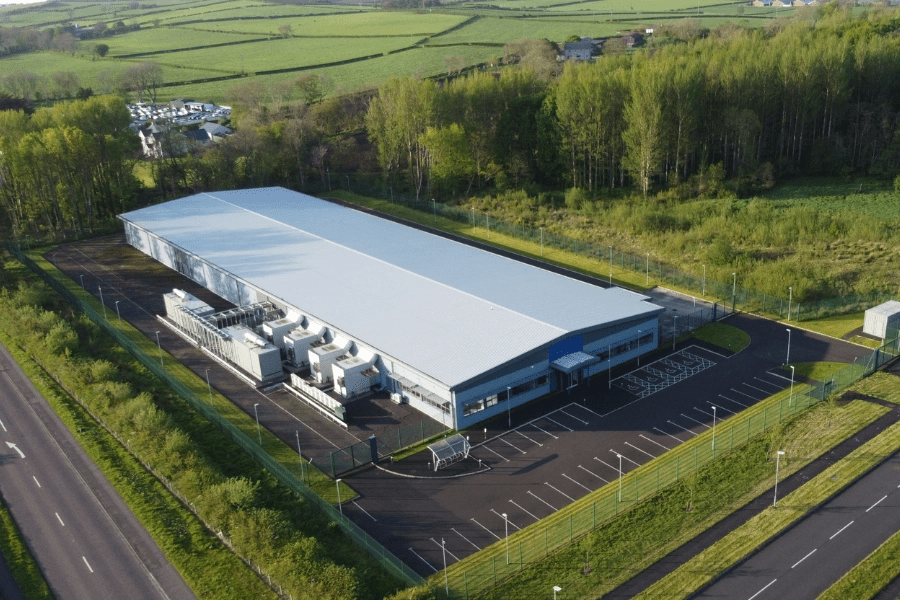Enabling AI without increasing carbon emissions: why clean energy needs clear communications urgently

The AI boom’s carbon cost: understanding AI carbon emissions
At a time when governments around the world are aiming to reduce carbon emissions at scale, one sector is experiencing an energy boom which could put our climate targets under threat: AI.
Data centres – the backbone of the digital world – are consuming vast amounts of energy, often powered by fossil fuels. In 2022, data centre electricity consumption was estimated at 1% of global electricity demand however the electricity demand from AI-optimised data centres is projected to more than quadruple by 2030.
Reliability is the most crucial factor for data centre profitability, so owners continue to rely on technologies like diesel generators as a source of backup power. This is despite their high NOx, SOx, and carbon emissions, which are increasingly at odds with the industry’s desire to reduce its climate impact.
AI is enabling extraordinary progress, and its momentum is unlikely to slow, so it is vital that we clean up the data centre sector to ensure that we can enable AI without increasing emissions.
This is a communications challenge as much as a technical one: perception, partnerships, and policy must move together. Addressing AI carbon emissions requires both technical solutions and effective storytelling to drive change.
The clean energy blueprint for reducing AI carbon emissions
To lead credibly, data centre operators need to go beyond offsets and certificates. They must invest in renewables, via on-site generation and power purchase agreements with renewable energy providers. Data centre developer Equinix is a leader in this area, with 96% renewable energy coverage across its global portfolio and 1.2 GW of PPAs under contract.
However, intermittent renewables alone are not capable of decarbonising data centre operations, which have high power needs 24/7. Data centres have a variety of options to run alongside wind and solar to deliver reliable clean power:
Energy storage: Lithium-ion batteries are a viable and increasingly popular option for supporting data centres, with batteries from companies such as CATL and Tesla offering numerous benefits in terms of energy density, lifespan, charging time, and efficiency.
Long duration energy storage (LDES): Given the 24/7 power needs of data centres, LDES solutions, including Invinity’s flow batteries, pumped storage hydro, such as those provided by Scottish Renewables, and Compressed Air Energy Storage (CAES) from companies like Hydrostor can play a vital role in supporting renewable generation to provide power for several days of low renewable generation.
Grid-balancing engines: Although predominantly running on fossil gas at present, flexible and efficient engines, such as those delivered by Greenhouse client Wärtsilä, can provide reliable backup power that can flex with demand. In future these assets can run on clean fuels when they become readily available.
Hydrogen fuel cells: Hydrogen-powered fuel cell generators are an exciting prospect for data centres looking for an alternative to diesel for backup power. Products such as HyFlex™ from Hitachi Energy produce electricity through a chemical reaction between hydrogen and oxygen, and the only byproduct is water and heat, so if the source of hydrogen for the generator is green, lifecycle emissions are close to zero.
Biofuels: Biofuels produced from organic matter can provide 100% renewable power for data centres, replacing traditional diesel generators. As a pioneer in green energy, Kao Data is a leader in this space and was the first data centre operator in Europe to transition its backup generators to 100% renewable HVO biofuel.
The heat and water challenges of AI
Water and heat are two additional issues to address when it comes to sustainability, as data centres generate significant heat and require large amounts of water for cooling.
The heat produced by data centres, if not properly managed, can lead to hardware failure, system crashes and data loss. However, effective cooling requires water – and lots of it. A 1 megawatt (MW) data centre can use up to 25.5 million litres of water annually just for cooling – equivalent to the daily water consumption of approximately 300,000 people. GPT-3, an AI model, is estimated to consume 500 ml of water per 10-50 responses. When multiplied with billions of its users, the total water footprint of AI becomes enormous.
Luckily there are several companies creating innovative approaches to manage this excess heat and water, such as Deep Green, which builds data centres at sites where heat can be recaptured and put to good use – such as swimming pools and local heat networks. In exchange for hosting the data centre, these sites can benefit from the heat produced, for free.
How AI can support the energy transition
While the growth of AI presents real challenges for the energy transition, Sustainable Energy for All (SEforALL) and partners in the 24/7 Carbon-Free Energy Compact believe that AI can play a transformative role in accelerating decarbonisation by optimising energy systems, improving forecasting for renewables and demand, and enhancing grid flexibility.
AI can support real-time tracking of emissions and clean energy use, helping organisations move toward 24/7 carbon-free energy goals with greater transparency. It also enables smarter planning and investment by identifying optimal locations for clean energy infrastructure and supporting energy access in underserved regions.
By improving data analysis, automating system responses, and informing better policy and market design, AI can help build a more efficient, resilient, and equitable clean energy future – provided it is developed and governed responsibly.
Why communications is the missing link
With the energy needs from AI and data centres continuing to grow, the need for data centre operators to prioritise sustainability becomes ever more important. Data centre leaders must elevate their visibility and communicate not just their targets, but how they’re investing in the infrastructure to meet them to become enablers of a clean digital revolution.
Equally – clean energy innovators – including renewable generators, engine manufacturers, energy storage companies and fuel cell leaders must work harder to highlight the crucial roles that their technologies can play in delivering reliable renewable power, tackling emissions and improving the sustainability of data centre operations.
Decarbonising data centres isn’t just an engineering challenge, it’s a storytelling opportunity. Effective communications can:
· Build alignment and momentum around climate goals
· Inspire customer trust and loyalty through transparency
· Attract investment and partnerships through clear market positioning
· Shape policy by showing leadership in action
The clean energy transition in data centres demands bold engineering and bold storytelling.
10 communication tips: making the case for a rapid, clean energy transition that ensures climate-safe AI
- · Show how AI is both a driver and a solution – highlight where AI is not just a source of energy demand, but also as a tool for efficiency, grid optimisation and predictive maintenance in clean energy.
- · Make the invisible visible – help audiences understand the physical reality behind digital services and link them to tangible energy solutions that need faster adoption.
- · Bridge two worlds – translate between the tech and energy sectors to help AI stakeholders understand grid constraints and clean energy stakeholders grasp data centre needs.
- · Highlight ‘24/7 clean power’ as the new standard – promote the shift from annual offsets to real-time clean energy matching and showcase organisations moving the needle here.
- · Tell the transition story, not just the end state – be transparent about what’s possible now versus in future (for example, hydrogen-readiness versus. hydrogen-actuality) and communicate the roadmap with credibility.
- · Champion lifecycle thinking – push conversations beyond just carbon to include water use, heat waste, land use and embedded emissions in the narrative.
- · Connect emissions to innovation – show how emissions reductions can unlock AI scalability, rather than framing sustainability as a constraint or burden.
- · Demonstrate leadership through partnership – highlight collaborations between hyperscalers, utilities, storage firms and policy-makers. Credibility grows when others become part of your story.
- · Be proactive in policy conversations – communicate how your organisation is shaping or responding to regulation (for example, data centre efficiency standards, carbon disclosure rules).
- · Use numbers, but lead with outcomes – stats are important but lead with the “so what.” For example: ‘This battery installation powers 3,000 hours of AI inference, emissions-free.’
Need help with your communications?
At Greenhouse, we help innovators like Sustainable Energy for All, Invinity, Wärtsilä, EDF Renewables and groundbreaking start-ups like Ideaonomy help the energy sector define, refine and amplify their leadership.
The data centre of the future is clean – and effective communication will help power it.
Are you playing a vital role in enabling renewable power to be available 24/7? Want support communicating your story?


